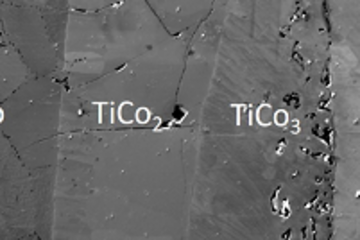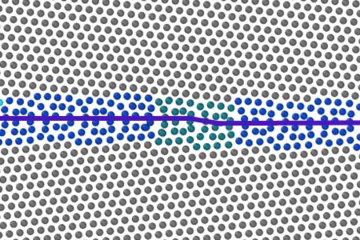All genres
1.
Journal Article
Corrosion of high-level radioactive waste iron-canisters in contact with bentonite. Journal of Hazardous Materials 285, pp. 464 - 473 (2015)
2.
Journal Article
An electrochemical calibration unit for hydrogen analysers. Talanta 125, pp. 257 - 264 (2014)
3.
Journal Article
Prove of hydrogen formation through direct potential measurements in the rolling slit during cold rolling. Metallurgical Research & Technology 111 (1), pp. 25 - 35 (2014)
4.
Journal Article
Accelerated cathodic reaction in microbial corrosion of iron due to direct electron uptake by sulfate-reducing bacteria. Corrosion Science 66, pp. 88 - 96 (2013)
5.
Journal Article
Characterization of thin anodic oxides of Ti–Nb alloys by electrochemical impedance spectroscopy. Electrochimica Acta 82, pp. 324 - 332 (2012)
6.
Journal Article
Marine sulfate-reducing bacteria cause serious corrosion of iron under electroconductive biogenic mineral crust. Environmental Microbiology 14 (7), pp. 1772 - 1787 (2012)
7.
Journal Article
Thermal stability of {110} facet terminated gold nanobelts. Applied Surface Science 258 (17), pp. 6224 - 6231 (2012)
8.
Journal Article
Electrochemical texturing of Al-doped ZnO thin films for photovoltaic applications. J. Sol. State Electrochem. 16 (1), pp. 283 - 290 (2012)
9.
Journal Article
An Investigation of the Different Methods of Removing Specimens for Hydrogen Analysis from Damaged Cold Finishing Rolls. Praktische Metallographie-Practical Metallography 48 (7), pp. 365 - 375 (2011)
10.
Journal Article
Electro-dissolution of 30Nb–Ti alloys in methanolic sulfuric acid-Optimal conditions for electropolishing. Electrochimica Acta 56 (19), pp. 6678 - 6682 (2011)
11.
Journal Article
A novel concept for the preparation of alloy nanowires. Physical Status Solidi A-Applications and Materials Science 208 (6), pp. 1259 - 1264 (2011)
12.
Journal Article
Grain boundary electrochemistry of beta-type Nb–Ti alloy using a scanning droplet cell. Physica Status Solidi A-Applications and Materials Science 208 (6), pp. 1246 - 1251 (2011)
13.
Journal Article
Enhancement of the electrocatalytic activity of gold nanoparticles towards methanol oxidation. Electrocatalysis 2 (2), pp. 106 - 113 (2011)
14.
Journal Article
Combinatorial corrosion study of the passivation of aluminium copper alloys. Corrosion Science 53 (1), pp. 1 - 6 (2011)
15.
Journal Article
A microelectrochemical scanning flow cell with downstream analytics. Electrochim. Acta 56, pp. 4315 - 4321 (2011)
16.
Journal Article
High throughput electrochemical screening and dissolution monitoring of Mg–Zn material libraries. Electrochim. Acta 56, pp. 9627 - 9636 (2011)
17.
Journal Article
Combinatorial investigation of Hf–Ta thin films and their anodic oxides. Electrochim. Acta 55 (27), pp. 7884 - 7891 (2010)
18.
Journal Article
Reactivity of Gold Nanobelts with Unique {110} Facets. A European Journal of Chemical Physics and Physical Chemistry 11 (13), pp. 2838 - 2843 (2010)
19.
Journal Article
An in-situ tensile tester for studying electrochemical repassivation behavior – fabrication and challenges. Revue of Scientific Instruments 81 (3), pp. 033902-1 - 033902-5 (2010)
20.
Journal Article
Preparation and specific properties of single crystalline metallic nanowires. Physica Status Solidi B 247, pp. 2380 - 2392 (2010)











